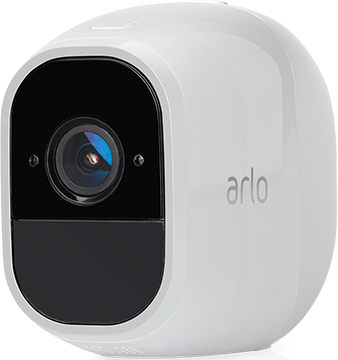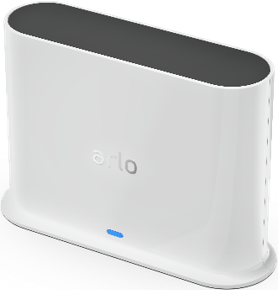- Subscribe to RSS Feed
- Mark Topic as New
- Mark Topic as Read
- Float this Topic for Current User
- Bookmark
- Subscribe
- Printer Friendly Page
- Mark as New
- Bookmark
- Subscribe
- Mute
- Subscribe to RSS Feed
- Permalink
- Report Inappropriate Content
I just noticed that the ethernet cable I changed to when I lengthened the distance between the Router and the base station is Cat 5; the shorter one was 5E. I can't say I've noticed a difference in the freeze-outs or cut videos but it's the upload speed that counts right? And for a four camera PRO2 system according to Arlo I would need just 4mbps, which the Cat5 handles easily. There is also a laptop connected to the router--ethernet only. 5 and 5E both handle 100MHz but the 5 supposedly has more risk of crosstalk.
Given all the issues with Arlo videos of late, should I be using a CAT 6 or higher? "CAT 6's thicker sheath protects against Near End Crosstalk (NEXT) and Alien Crosstalk (AXT). Most of our AV and IP surveillance customers opt for Cat6a STP or Cat6a FTP. Both offer shielding from alien crosstalk and interference around high voltage lines." (from planetechusa) Perhaps obsolete ethernet cables could cause some of the problems we're seeing? Then there's different kinds of shielding nomenclature, gel-filled, types made to be within 6 inches of power cables, etc. A bit confusing.
Solved! Go to Solution.
- Related Labels:
-
Troubleshooting
Accepted Solutions
- Mark as New
- Bookmark
- Subscribe
- Mute
- Subscribe to RSS Feed
- Permalink
- Report Inappropriate Content
@improve58 wrote:
@StephenB So are the issues of 'crosstalk' or other interference irrelevant here? I thought that might refer to interference from other wifi channels or possibly wireless landline cable phones that are known to interfere on certain frequencies. Seems like 6A is the way to go for very little extra cost.
Reducing crosstalk isn't about reducing radio interference. Signals carried in one wire can be picked up by an immediately adjacent (parallel) wire. That's the same principle as is used in a transformer. In the case of ethernet, you have four twisted pairs of wires running through the same cable. Over a really long cable run, the crosstalk between the pairs increases. This isn't enough to interfere with fast ethernet or gigabit over 100m, but it can interfere with 10 gigabit ethernet. Cat 6 can carry 10 gigabit for 37meters, you need Cat 6a to carry it for the normal 100 meters.
Cat 6A is a perfectly fine choice, especially if you have a distance more than 37 feet and are wanting to future-proof for faster speeds than 1 gigabit. I used it myself when I had my home wired for ethernet a few years ago (and I am using 10 gig ethernet for a couple of devices). It is thicker/less flexible than Cat 6.
- Mark as New
- Bookmark
- Subscribe
- Mute
- Subscribe to RSS Feed
- Permalink
- Report Inappropriate Content
All grades of cable should be good for 100m (328 feet)
Cat-5 is ok for the base station->router link because it only carries uses fast ethernet. Cat 5e or Cat 6/6a are needed for gigabit.
Personally I just buy cat 6a - prices are about the same, and it works with all speeds.
If you are running the cables inside walls, then you would need plenum or riser grade - that uses different insulation that won't generate toxic smoke if there is a fire. That insulation is thicker and less flexible than normal cable, so I suggest not getting it if you aren't running through walls, ceilings or ducts.
Shielded cables aren't needed for most homes, they are more useful when you are running the lots of cables together, of if the cables are going near elevator shafts or other runs where there is a lot of electrical noise.
- Mark as New
- Bookmark
- Subscribe
- Mute
- Subscribe to RSS Feed
- Permalink
- Report Inappropriate Content
@StephenB So are the issues of 'crosstalk' or other interference irrelevant here? I thought that might refer to interference from other wifi channels or possibly wireless landline cable phones that are known to interfere on certain frequencies. Seems like 6A is the way to go for very little extra cost.
- Mark as New
- Bookmark
- Subscribe
- Mute
- Subscribe to RSS Feed
- Permalink
- Report Inappropriate Content
@improve58 wrote:
@StephenB So are the issues of 'crosstalk' or other interference irrelevant here? I thought that might refer to interference from other wifi channels or possibly wireless landline cable phones that are known to interfere on certain frequencies. Seems like 6A is the way to go for very little extra cost.
Reducing crosstalk isn't about reducing radio interference. Signals carried in one wire can be picked up by an immediately adjacent (parallel) wire. That's the same principle as is used in a transformer. In the case of ethernet, you have four twisted pairs of wires running through the same cable. Over a really long cable run, the crosstalk between the pairs increases. This isn't enough to interfere with fast ethernet or gigabit over 100m, but it can interfere with 10 gigabit ethernet. Cat 6 can carry 10 gigabit for 37meters, you need Cat 6a to carry it for the normal 100 meters.
Cat 6A is a perfectly fine choice, especially if you have a distance more than 37 feet and are wanting to future-proof for faster speeds than 1 gigabit. I used it myself when I had my home wired for ethernet a few years ago (and I am using 10 gig ethernet for a couple of devices). It is thicker/less flexible than Cat 6.
- Mark as New
- Bookmark
- Subscribe
- Mute
- Subscribe to RSS Feed
- Permalink
- Report Inappropriate Content
@StephenB Thanks, yeah I'm just running 6-10ft max on the wall/floor molding from router to base station. (Arlo recommends 6ft.) but the 6A will give me a just a drop more insurance--probably negligible at this distance --and this may have nothing to do with the video issues everyone is experiencing, but I figure 6A can only help. Thanks again.
-
Arlo Mobile App
595 -
Arlo Pro 2
11 -
Arlo Smart
174 -
Before You Buy
984 -
Features
429 -
Firmware Release Notes
57 -
Google Assistant
1 -
IFTTT (If This Then That)
24 -
Installation
1,130 -
Online and Mobile Apps
865 -
Service and Storage
317 -
SmartThings
37 -
Troubleshooting
6,230

